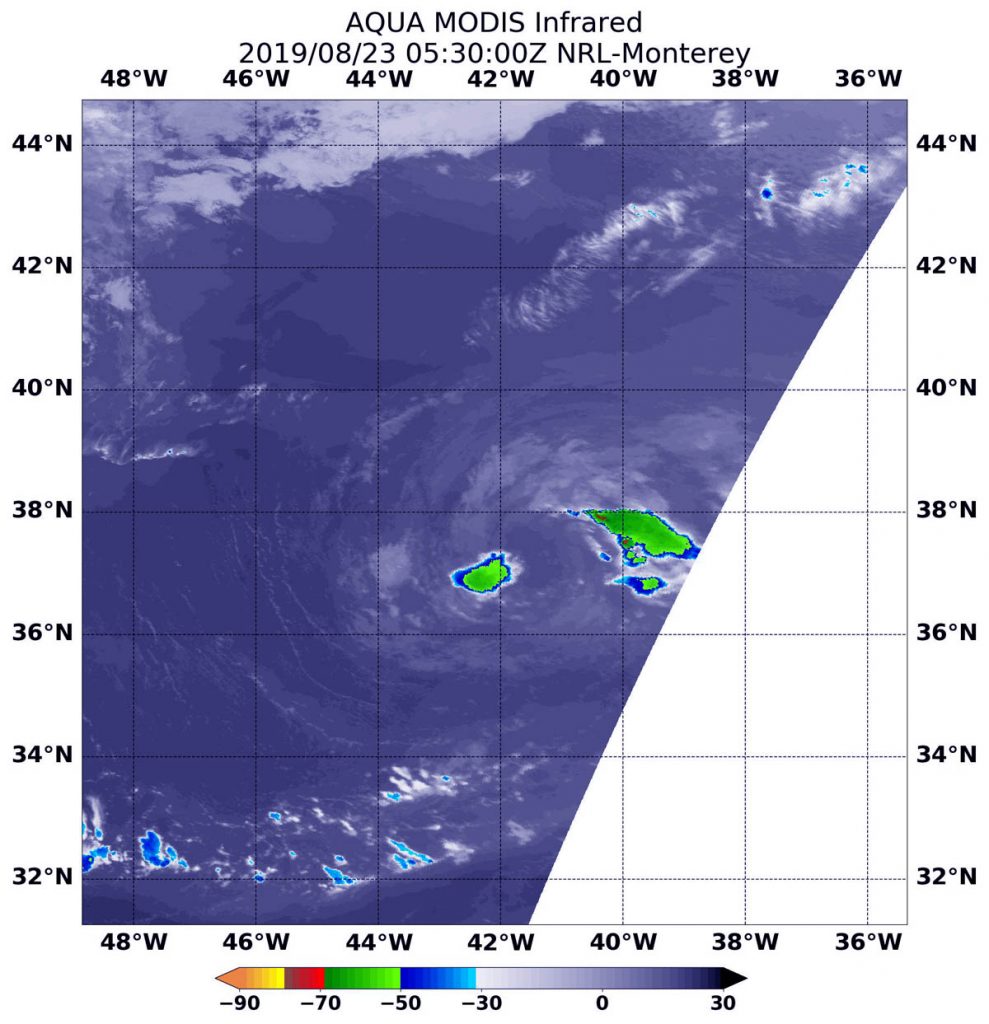Aug. 23, 3019 – NASA’s Aqua Satellite Writing the End of Depression Chantal’s Story
Tropical Depression Chantal is winding down in the North Central Atlantic Ocean and that was confirmed by infrared data from NASA’s Aqua satellite on August 23.

The National Hurricane Center or NHC forecasts the end of Chantal’s life story later in the day, as the storm is forecast to become a remnant low pressure area.
On Aug. 23 at 1:30 a.m. EDT (0530 UTC), the Moderate Imaging Spectroradiometer or MODIS instrument that flies aboard NASA’s Aqua satellite used infrared light to analyze the strength of storms by providing temperature information about the system’s clouds. The strongest thunderstorms that reach high into the atmosphere have the coldest cloud top temperatures.
Two areas remained with strongest storms. Those areas were east and west of the center of circulation where cloud top temperatures were as cold as minus 50 degrees Fahrenheit (minus 45.5 degrees Celsius).
At 5 a.m. EDT (0900 UTC), the center of Tropical Depression Chantal was located near latitude 37.1 degrees north and longitude 40.9 degrees west. That places the center of Chantal about 765 miles (1,225 km) west of the Azores Islands. Chantal is moving toward the southeast near 8 mph (13 kph) and is expected to make a slow clockwise loop over the next few days.
Maximum sustained winds have decreased to near 30 mph (45 kph) with higher gusts. The estimated minimum central pressure is 1010 millibars.
NOAA’s National Hurricane Center noted, “Additional weakening is forecast, and Chantal is likely to degenerate into a remnant low by tonight. The remnant low could dissipate by late Sunday [Aug. 25] or Monday [Aug. 26].”
For updated forecasts, visit: www.nhc.noaa.gov
